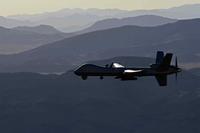The Chief of Naval Operations told House defense appropriators today he worries that the Pentagon is "enslaved to a process" of buying weapons rather than buying what it needs when it needs it in the most expeditious manner possible.
Adm. Gary Roughead made his comments in response to questions from Rep. Norm Dicks, who voiced concerns about the speed and efficiency of the acquisition process. Dicks pointed to several weapons, including the Marines Expeditionary Fighting Vehicle, first begun in 1988 and recently cancelled. "I'm just worried that we are just wasting billions in development..." and eventually finding out a weapon "just isn't what we wanted," Dicks said. He asked if expedited procedures could be put in place at the service level to improve things.
Roughead also criticized "extensive" weapons testing as something that "further slows things down," though he was careful to say he didn't want to field weapons that had not been thoroughly vetted. For those with long memories, they will remember that Congress created the director of Operational Test and Evaluation out of concern the military wasn't doing enough rigorous testing.
Navy Secretary Ray Mabus noted that EFV would have been the only 40-year program he knew of if it had gone forward. He said Marine Commandant James Amos wants to have driven a prototype of the EFV replacement by the time his term as commandant ends. "I believe we will get there in three-and-a-half years," Mabus told the House Appropriations defense subcommittee hearing this morning.
A system that will not get through in that short a time is the SSBN-X, replacement submarine for the current Ohio Class. Congress has expressed concern about the SSBN-X for some time, especially since the Congressional Budget Office last year estimated the system would cost an average of more than $7 billion per boat. Since then, the Pentagon has struggled to do two things: protect and ensure funding for a strategic system seen as absolutely critical to America's ability to deter enemies and defend itself; and bring the cost down.
Today, Roughead said the Navy is eyeing a range of $ billion to $5 billion a boat. Getting there will involve some trading of capabilities. The CNO said the service would "commit to stealth and it has to be able to perform the mission." Ron O'rourke, the respected naval analyst for the Congressional Research Service, decribed that mission sthis way in his recent report on the SSBN-X: "The SSBNs’ basic mission is to remain hidden at sea with their SLBMs, so as to deter a nuclear attack on the United States by another country."
One other issue was raised, notable mainly for who raised it. Rep. Jim Moran, a longtime member of the appropriations defense subcommittee, told Mabus and Roughead he was concerned about testers findings that the Littoral Combat Ships are not built to survive combat, as are most US ships. "You have to ask why you are buying 55 of these LCS when they are not designed to survive in a combat environment," moran said, referring to the annual report by the director of OTE.
Roughead told Moran that, while LCS is not as capable of surviving as some other Navy ships, it does possess redundant capabilities and some survival design "that allows them to go into hostile territory." When pressed at the end of the hearing, Moran declined to say he would withhold funding or otherwise redirect the program.








